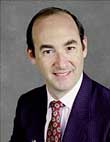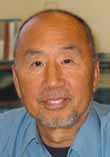|
| Today
8 a.m.
EHS 432
Radiation Protection-Lab Safety
Bldg. 51-201
10:30 a.m.
Beam Physics
Microwave Deflectors: Normal Conducting Crab Cavity for Generation of Short X-R Pulses in Storage Rings and Discussion on Microwave Undulators
Valery Dolgashev, SLAC
Bldg. 71-264
Noon
Yoga Club
Class with Naomi Hartwig
Bldg. 70A-3377
1 p.m.
Scientific Computing
Recent Developments in Computational Differentiation
Christian Bischof, RWTH Aachen U.
Bldg. 50A-5132
Monday
Noon
Yoga Club
Class with Inna Belogolovsky
Bldg. 70A-3377
1:30 p.m.
ALS
Monolithic Integration of Electronics and Sub-Wavelength Metal Optics in Deep Submicron CMOS Technology
Peter Catrysse, Stanford U.
Bldg. 6-2202
|
|
 |
|
|
 |
|
|
Morning Editions: Biscuits and Gravy with 2 Eggs
Monday's Breakfast:
Breakfast Quesadillas with Home Fries
Market Carvery: Artichoke and Mushroom Pasta
The Fresh Grille: Chili Burger with Cheese and Fries
Menutainment: Viva El Burrito
|
B'fast: |
6:30
a.m. - 9:30 a.m. |
| Lunch: |
11
a.m. - 1:30 p.m. |
Full
menu
 |
|
|
|
 |
|
 |
Turn-Away Crowd Can
Hear Director Monday
When Lab Director Steve Chu kicked off the 2005 Summer Lecture Series on June 22 with the talk "Physics Meets Biology," so many people tried to crowd into the Building 50 Auditorium that the fire marshall turned more than 100 of them away. As they were leaving, Chu promised that he would repeat his talk again so that they could all hear him. Thus, on Monday, Aug. 1, the Director will return to the auditorium at noon to present another talk, this one focused more on biology. Those planning to attend should arrive early to be assured a seat.

|
 |
|
 |
Desktop Phone Call
Validation to Begin
Based on Lab desktop telephone bills from August to October 2005, the Information Technology Division will begin requiring selected users to validate their outgoing calls starting Nov. 1. Two percent of Lab telephones will be randomly selected to validate an itemized phone bill, and indicate any non-business calling. Reimbursement for these calls will be required if it reaches a designated threshold. After Nov. 1, desktop validation will be ongoing using the most recent quarterly phone bills. The RPM (9.02(A)(2)) states that Lab desktop telephones are for business use only. Read FAQs here. Contact Telephone Services (x7997) for more information.
|
 |
|
 |
|
 |

Air Expert Helps Set New
Ventilation Standards
|
|
|
|
 |
 |
|
|
Sherman |
|
|
|
Max Sherman, with the Lab's Environmental Energy Technologies Division, provides a review of the new air quality standards put forth by the American Society of Heating, Refrigerating and Air-Conditioning Engineers (ASHRAE) for HGTV.com. Sherman is chairman of the ASHRAE committee that wrote the standards, which take into account the contaminants that get trapped inside homes that are built tighter to save energy. Full story.

In Silico Techniques
Tell How Protein Turns
|
|
|
|
 |
 |
|
|
Sung-Hou Kim |
|
|
|
Computational methods that can predict the structure of a protein from its amino acid sequence are improving. Developers of such programs say that the technology may one day completely supplant experimental structure determination. Currently when a new protein sequence comes out, the first way to predict its function is by going to the sequence database and finding the protein sequences that are similar," says Sung-Hou Kim, a Berkeley Lab physical bioscientist. "If the function of that protein is known you can attach that function to the new sequence. This is called transitive annotation. For most protein sequences, their functions are now inferred this way." Full story.

|
 |
|
|
 |
|
|

